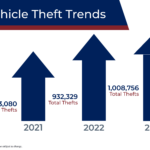For the third consecutive year, rating downgrades outpaced upgrades in the property/casualty marketplace, according to a special report released by A.M. Best Co.
The continuing trend of rating downgrades reportedly illustrates the enduring adverse development of prior accident-year loss reserves, especially for the commercial-lines insurers that are exposed to long-tailed liability such as workers’ compensation, construction defect and medical-malpractice coverages.
According to the special report, “A.M. Best Rating Downgrades Outpace Upgrades for 3rd Consecutive Year,” the financial strength of the property/casualty insurance industry over the past year continued to be impacted by adverse loss-reserve development, increased exposure to asbestos and environmental liabilities, challenging regulatory environments, rising loss costs, medical-cost inflation, staggering jury awards and weather-related catastrophe losses. In addition, the volatile investment environment caused further strain for all companies—not only those with elevated equity leverage. Despite improved pricing, these factors weakened the balance sheets of many insurers and led to an increase in rating downgrades over the 12-month period ended July 12, 2003.
In addition to the weakened capital position of many companies, the quality of capital has diminished. As the hard market continued into 2003 and significant rate increases were taken across all three major segments of the industry—commercial lines, personal lines and reinsurance—underwriting leverage ratios were stressed. The robust premium development led to increased dependence on reinsurance; the issuance of debt; and other soft-money transactions, further weakening the risk-adjusted capitalization of many companies.
More favorable returns were noted during the first half of 2003, as the equity markets rebounded and companies continued their focus on underwriting fundamentals. These actions, however, were long overdue, and it will take time to reverse the several years of inadequate pricing that led to poor underwriting returns.
While the continued rate hardening will enable many companies to maintain or even improve their operating returns because of much-improved loss experience, continued adverse reserve development, equity-market volatility and soft-money transactions contributed to a weakened risk-adjusted capital position for many carriers.
The Report went on to say that as the hard market continues, many companies are finding they must either reduce their policy counts or limit growth to maintain an acceptable level of risk-adjusted capital. How long the hard market will continue before companies feel the need to regain lost market share is one of many questions facing the industry. And if the hard market continues beyond 2004, the ability of many insurers to support additional underwriting risks with their weakened capital positions is in question.
Was this article valuable?
Here are more articles you may enjoy.

 Vintage Ferrari Owners’ Favorite Mechanic Charged With Theft, Fraud
Vintage Ferrari Owners’ Favorite Mechanic Charged With Theft, Fraud  US Eyeing Ship’s Electrical System After Baltimore Bridge Crash
US Eyeing Ship’s Electrical System After Baltimore Bridge Crash  National Crime Report Shows Vehicle Thefts Surged to More than 1 Million in 2023
National Crime Report Shows Vehicle Thefts Surged to More than 1 Million in 2023  Supreme Court Allows More Transport Workers to Bypass Arbitration and Sue Employers
Supreme Court Allows More Transport Workers to Bypass Arbitration and Sue Employers 